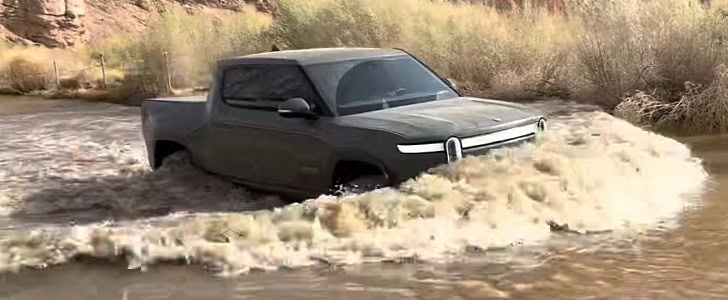Ordering a Rivian? Use code JOSE1715716 to earn 500 points on your purchase.
Hurricane Preparedness with a Rivian

As climate change intensifies, extreme weather events like hurricanes are becoming more frequent. For electric vehicle owners, especially those with a Rivian, preparation is key—not only for safety but also for maximizing the unique benefits of your electric truck during and after a storm. Whether you own a Rivian R1T or R1S, here’s how to prepare for hurricane season while making the most of your EV’s capabilities.
Charge Up Ahead of Time
One of the first things any electric vehicle owner should do in preparation for a hurricane is to ensure the vehicle is fully charged before the storm hits. Power outages are common during hurricanes, which could make charging your vehicle difficult in the aftermath. Rivian’s range—over 300 miles per charge—can help provide mobility during recovery, whether for evacuating or aiding neighbors.
In the days leading up to the hurricane’s landfall, monitor weather forecasts closely. Once a storm warning is issued, plug in your Rivian and charge it to full capacity. If you have access to a Level 2 charger, you’ll want to start this process early to ensure maximum range. In the event of an evacuation, that extra charge can be critical.
Plan Your Charging Routes
If an evacuation becomes necessary, it’s important to know where charging stations are along your route. Use the Rivian app or EV charging station locator apps to map out available chargers on your evacuation path. Keep in mind that some charging stations may be out of service due to the hurricane, so having multiple options in mind is a smart move.
Rivian’s large battery capacity gives you flexibility, but an EV-specific evacuation plan ensures you won’t be caught without power in unfamiliar or heavily impacted areas. If possible, evacuate early to avoid traffic congestion, as slower speeds in stop-and-go traffic can reduce range.
Use Your Rivian as a Power Source
One of the standout features of Rivian vehicles is their power outlets and onboard inverter, which allows the vehicle to serve as a mobile power station. During or after a hurricane, this feature becomes incredibly useful. If your home loses electricity, your Rivian can provide power for essential devices. The outlets in the truck bed (for R1T owners) or rear of the vehicle (for R1S owners) can keep devices like phones, laptops, or even small appliances running.
This power capability could also support community efforts. For instance, Rivian owners can use their vehicles to charge communication equipment, power lights for temporary shelters, or even run small power tools if debris cleanup is necessary.
Water Wading Capability
Hurricanes often bring flooding, making knowing your Rivian’s water-wading capacity crucial. Both the R1T and R1S are designed to handle water and offer the following water fording height:
- R1T is 43.1 inches
- R1S is 43.0 inches
This feature could make a huge difference in navigating flooded areas when roads are otherwise impassable for traditional vehicles. However, always exercise caution when driving through floodwaters—know the depth and flow before attempting to cross.
In some cases, staying put is the safer option, so it’s essential to have a plan for sheltering in place as well.
Rivian’s Sustainability and the Future of Storm Preparedness
Owning a Rivian isn’t just about luxury and off-road capability—it’s also a step toward sustainability. In the wake of hurricanes, which are worsened by climate change, every electric vehicle on the road represents a reduction in carbon emissions, helping to mitigate future storms. Rivian’s commitment to eco-friendly practices extends beyond just the vehicles. Their adventure network of chargers, many of which are powered by renewable energy, ensures that charging up for your next journey—whether for a post-storm rescue mission or a cross-country trip—is done sustainably.
After the Storm: Inspection and Maintenance
Once the storm passes, inspect your Rivian for any signs of damage, especially if you’ve driven through floodwaters. While Rivian vehicles are built tough, extreme weather can still affect components. Check the underbody for debris or damage to suspension parts and ensure your power outlets are functioning correctly if they’ve been in use.
Rivian’s customer support and growing service network are excellent resources if you encounter any issues post-storm. If you notice any strange performance or battery behavior after the hurricane, contacting Rivian support early could prevent further complications.
In a world where extreme weather events are becoming the norm, owning a Rivian offers unique advantages. From long-range capability to serving as a power source and navigating through flooded areas, your Rivian can be a key asset during hurricane season. By preparing ahead of time and utilizing the features Rivian has to offer, you can ensure you and your loved ones stay safe and mobile, even in the most challenging conditions.
